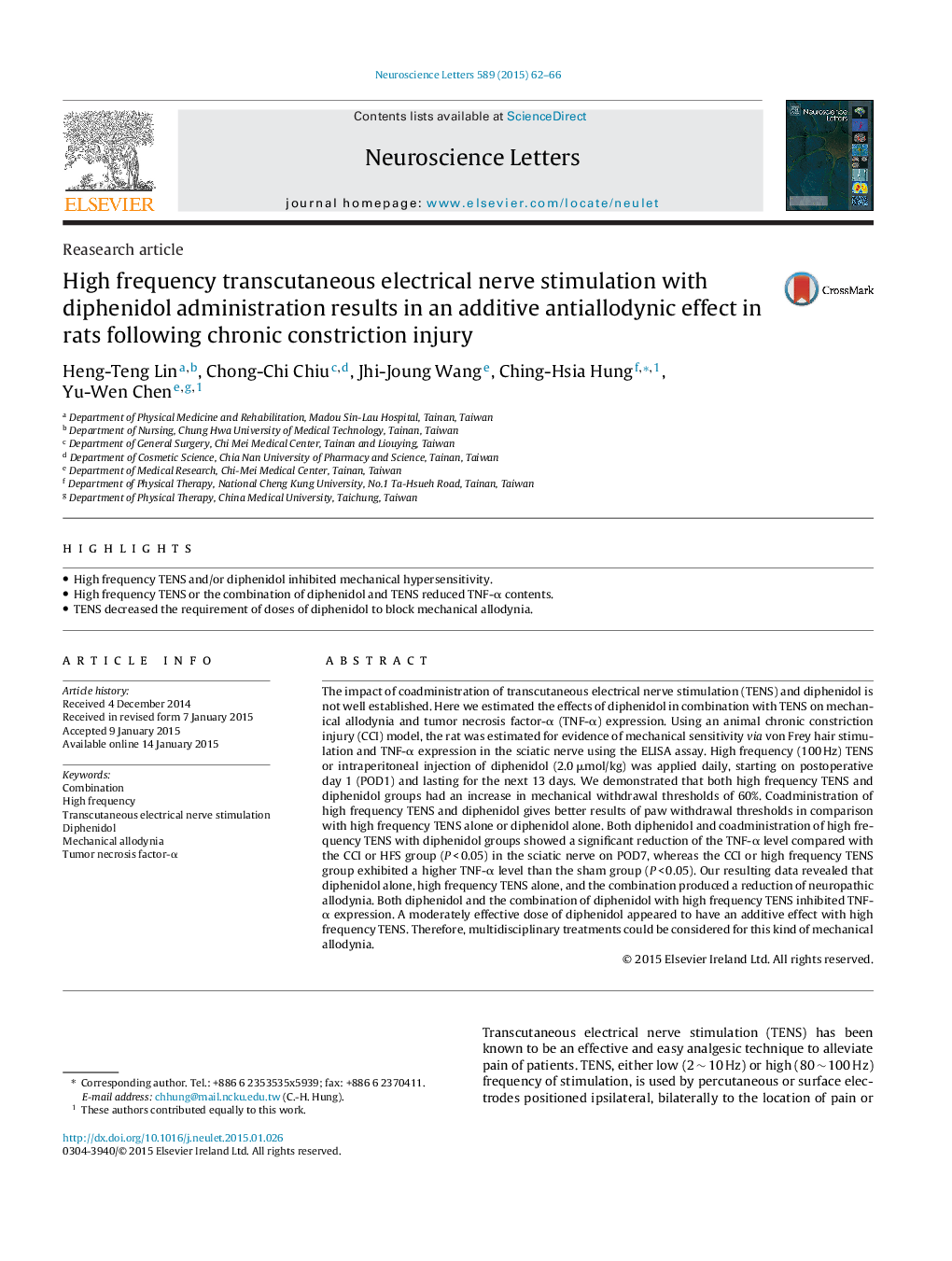| کد مقاله | کد نشریه | سال انتشار | مقاله انگلیسی | نسخه تمام متن |
|---|---|---|---|---|
| 6281063 | 1615110 | 2015 | 5 صفحه PDF | دانلود رایگان |
- High frequency TENS and/or diphenidol inhibited mechanical hypersensitivity.
- High frequency TENS or the combination of diphenidol and TENS reduced TNF-α contents.
- TENS decreased the requirement of doses of diphenidol to block mechanical allodynia.
The impact of coadministration of transcutaneous electrical nerve stimulation (TENS) and diphenidol is not well established. Here we estimated the effects of diphenidol in combination with TENS on mechanical allodynia and tumor necrosis factor-α (TNF-α) expression. Using an animal chronic constriction injury (CCI) model, the rat was estimated for evidence of mechanical sensitivity via von Frey hair stimulation and TNF-α expression in the sciatic nerve using the ELISA assay. High frequency (100 Hz) TENS or intraperitoneal injection of diphenidol (2.0 μmol/kg) was applied daily, starting on postoperative day 1 (POD1) and lasting for the next 13 days. We demonstrated that both high frequency TENS and diphenidol groups had an increase in mechanical withdrawal thresholds of 60%. Coadministration of high frequency TENS and diphenidol gives better results of paw withdrawal thresholds in comparison with high frequency TENS alone or diphenidol alone. Both diphenidol and coadministration of high frequency TENS with diphenidol groups showed a significant reduction of the TNF-α level compared with the CCI or HFS group (P < 0.05) in the sciatic nerve on POD7, whereas the CCI or high frequency TENS group exhibited a higher TNF-α level than the sham group (P < 0.05). Our resulting data revealed that diphenidol alone, high frequency TENS alone, and the combination produced a reduction of neuropathic allodynia. Both diphenidol and the combination of diphenidol with high frequency TENS inhibited TNF-α expression. A moderately effective dose of diphenidol appeared to have an additive effect with high frequency TENS. Therefore, multidisciplinary treatments could be considered for this kind of mechanical allodynia.
Journal: Neuroscience Letters - Volume 589, 4 March 2015, Pages 62-66
